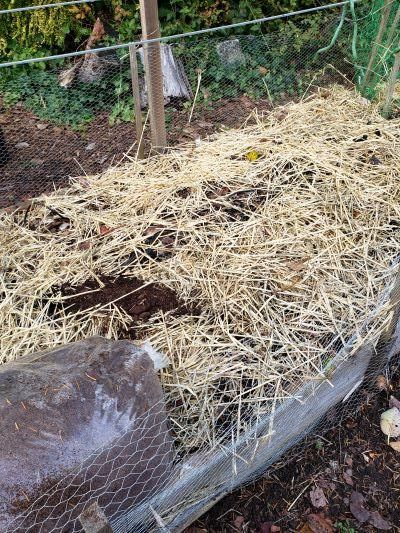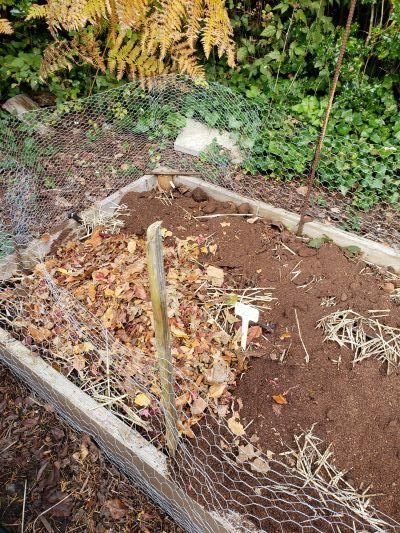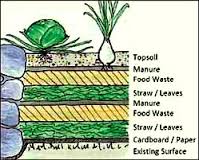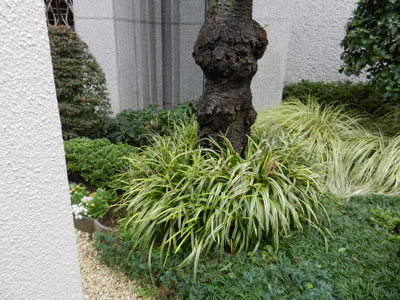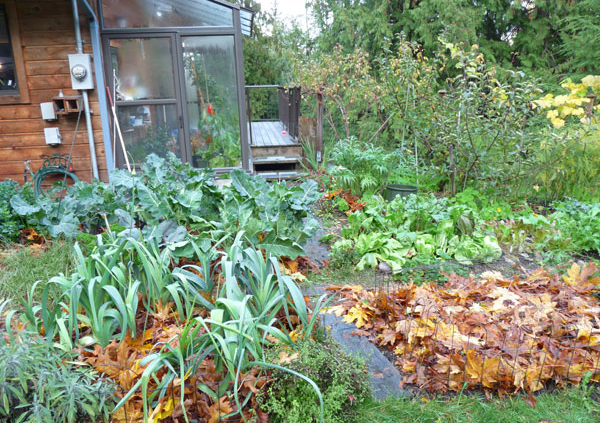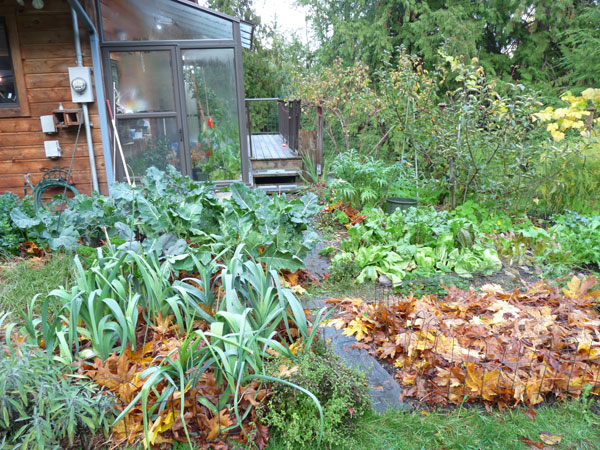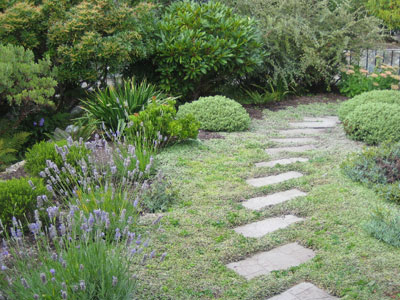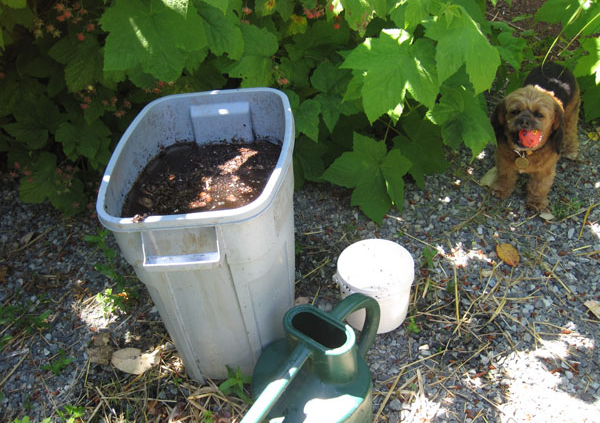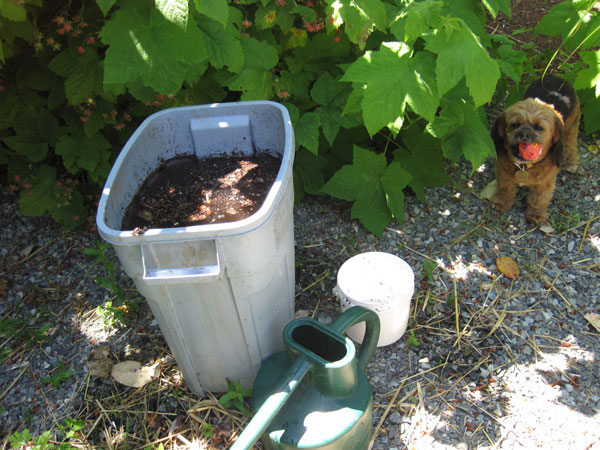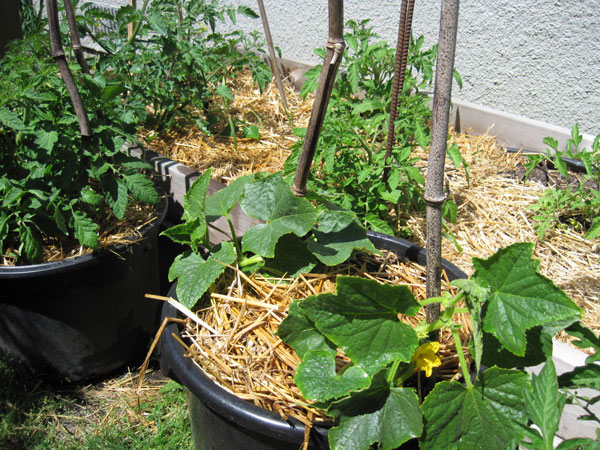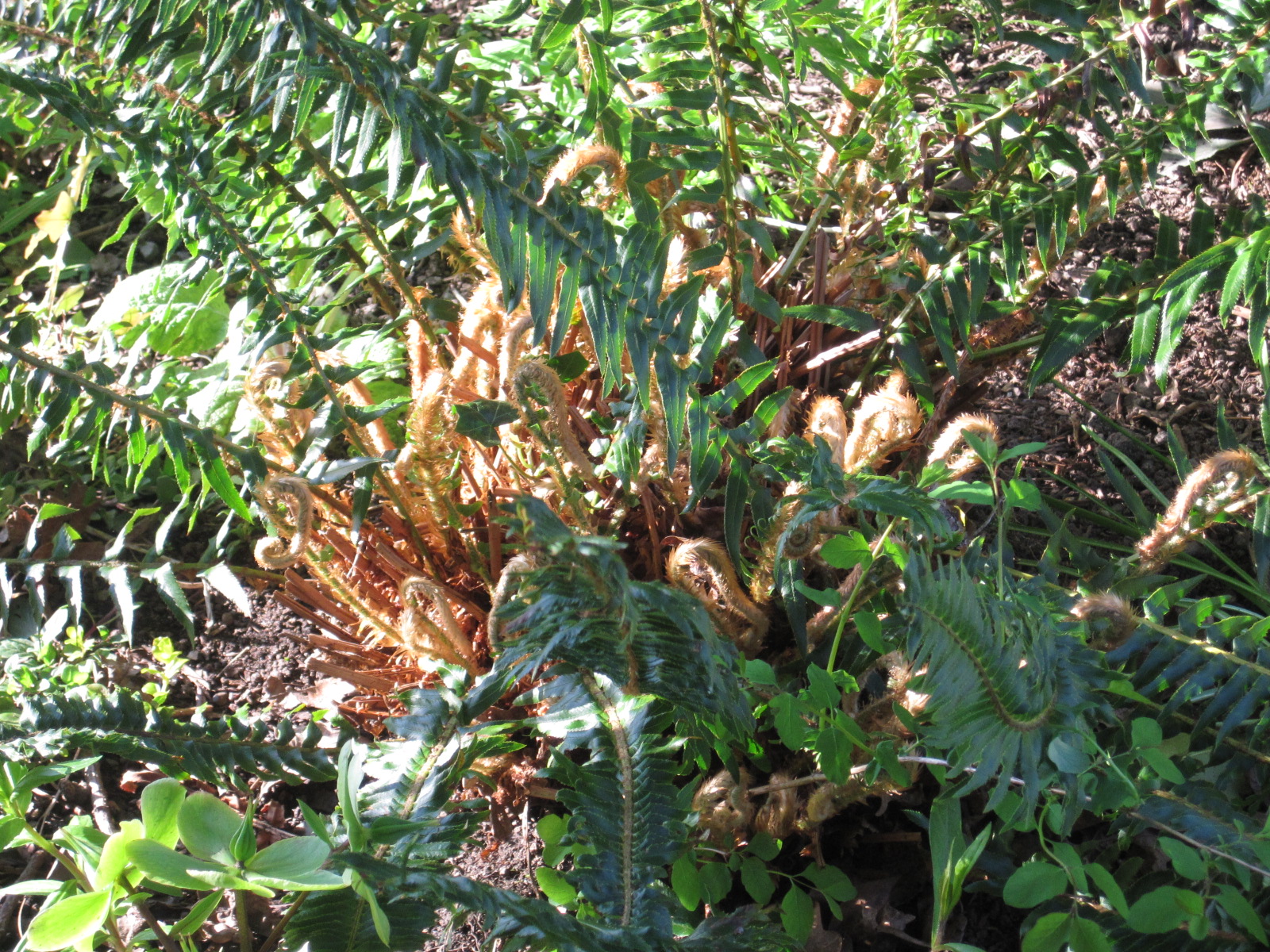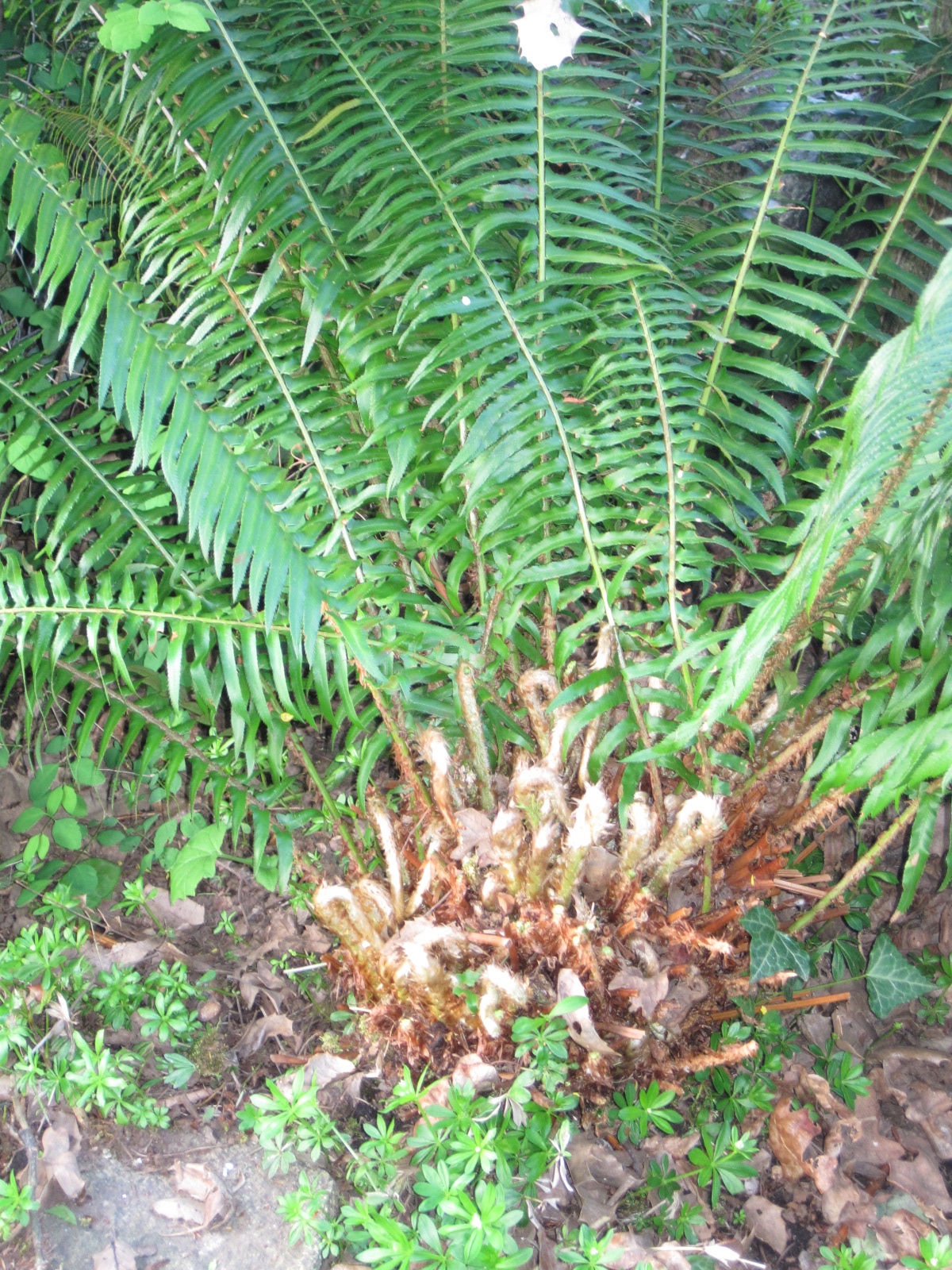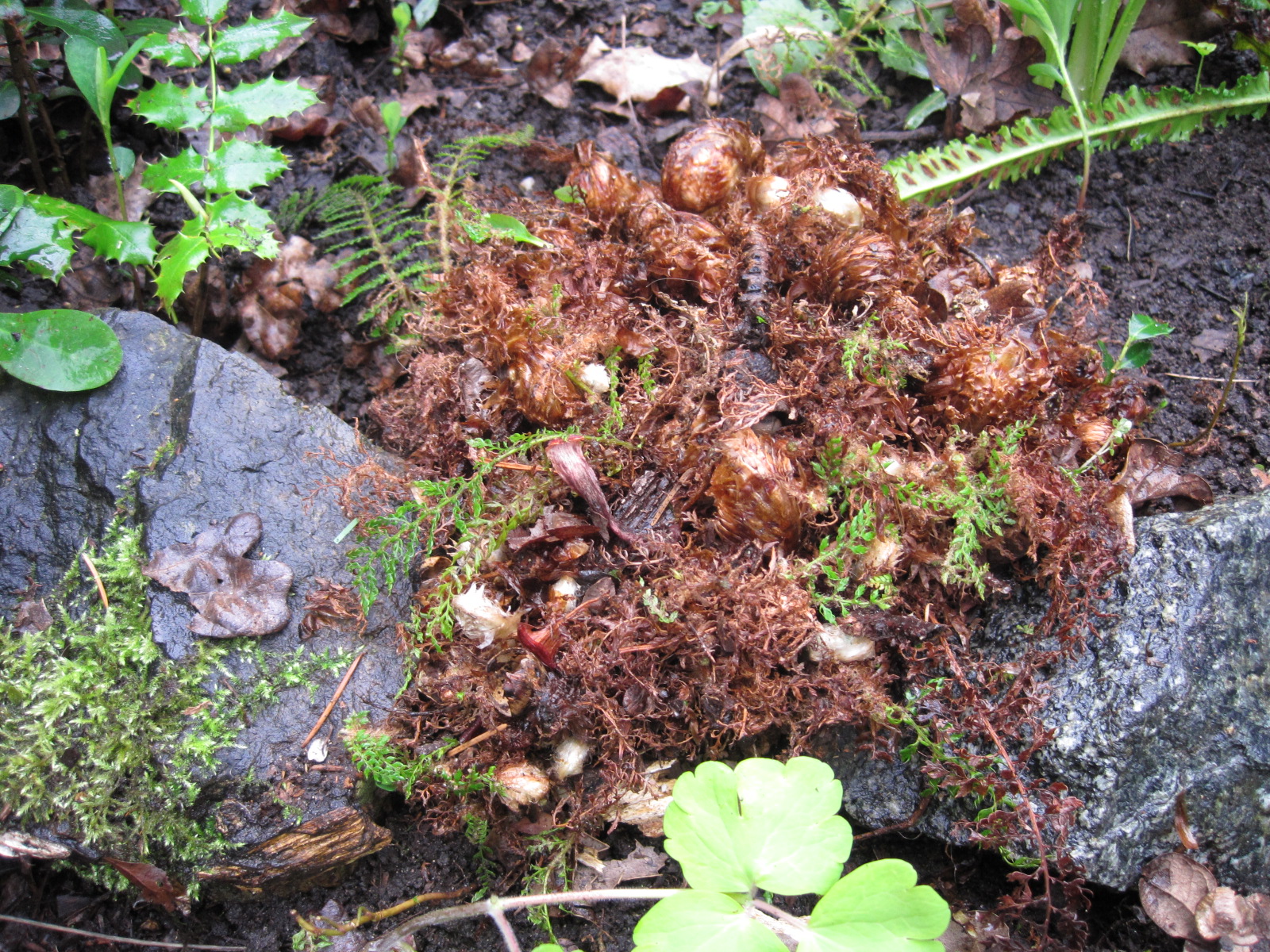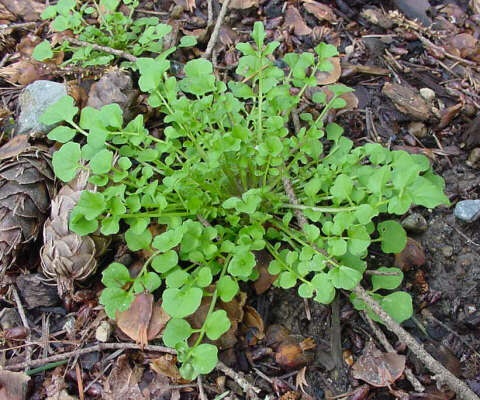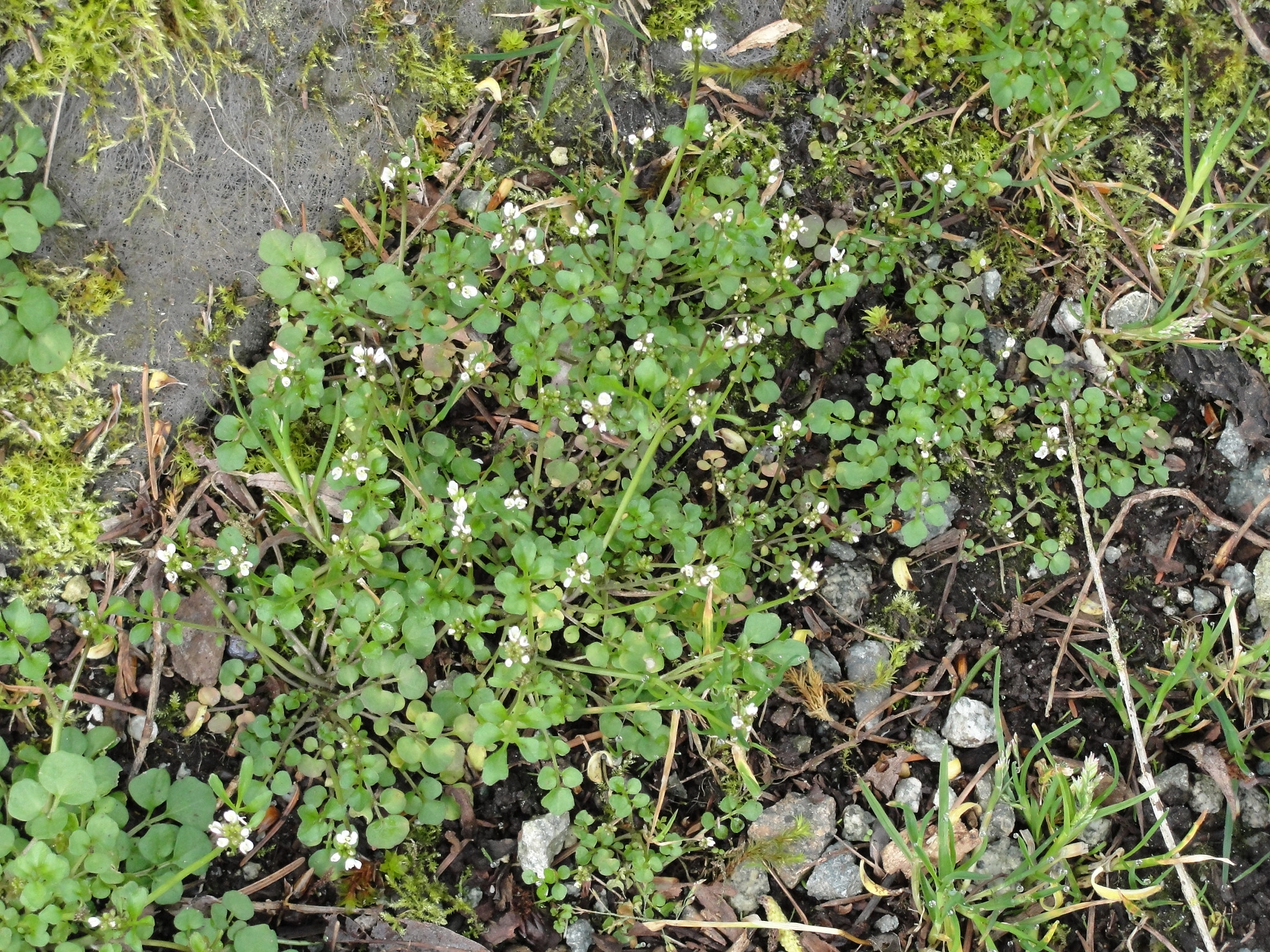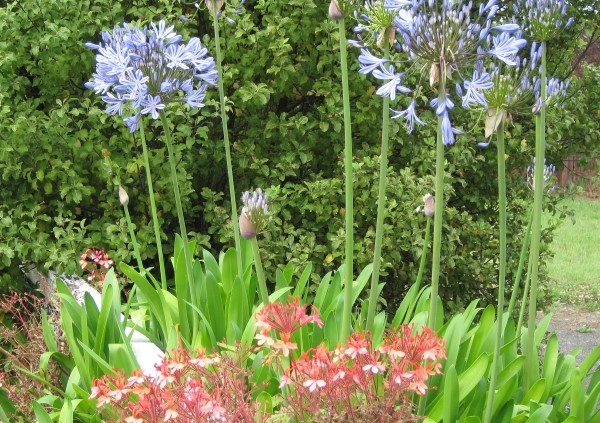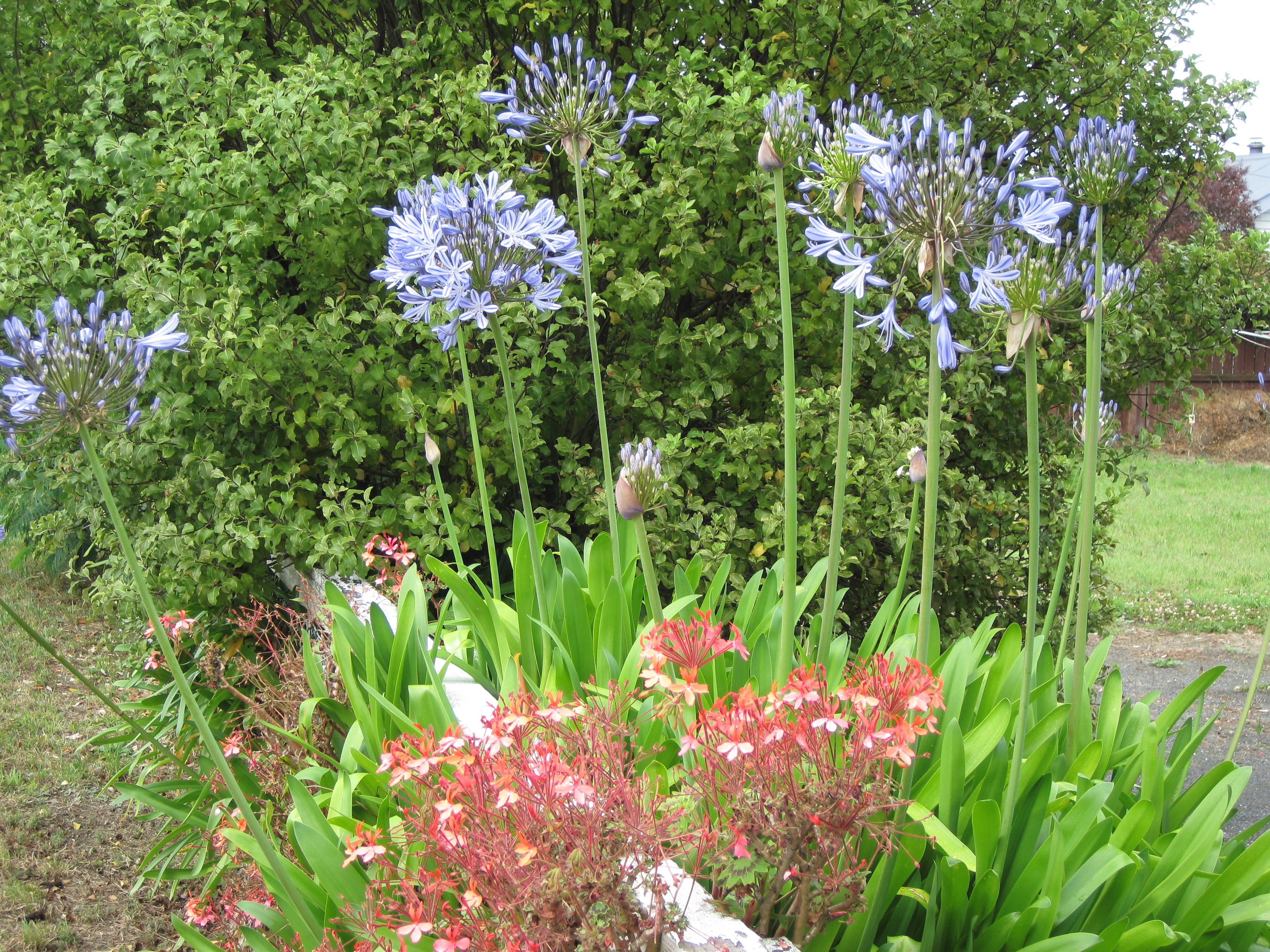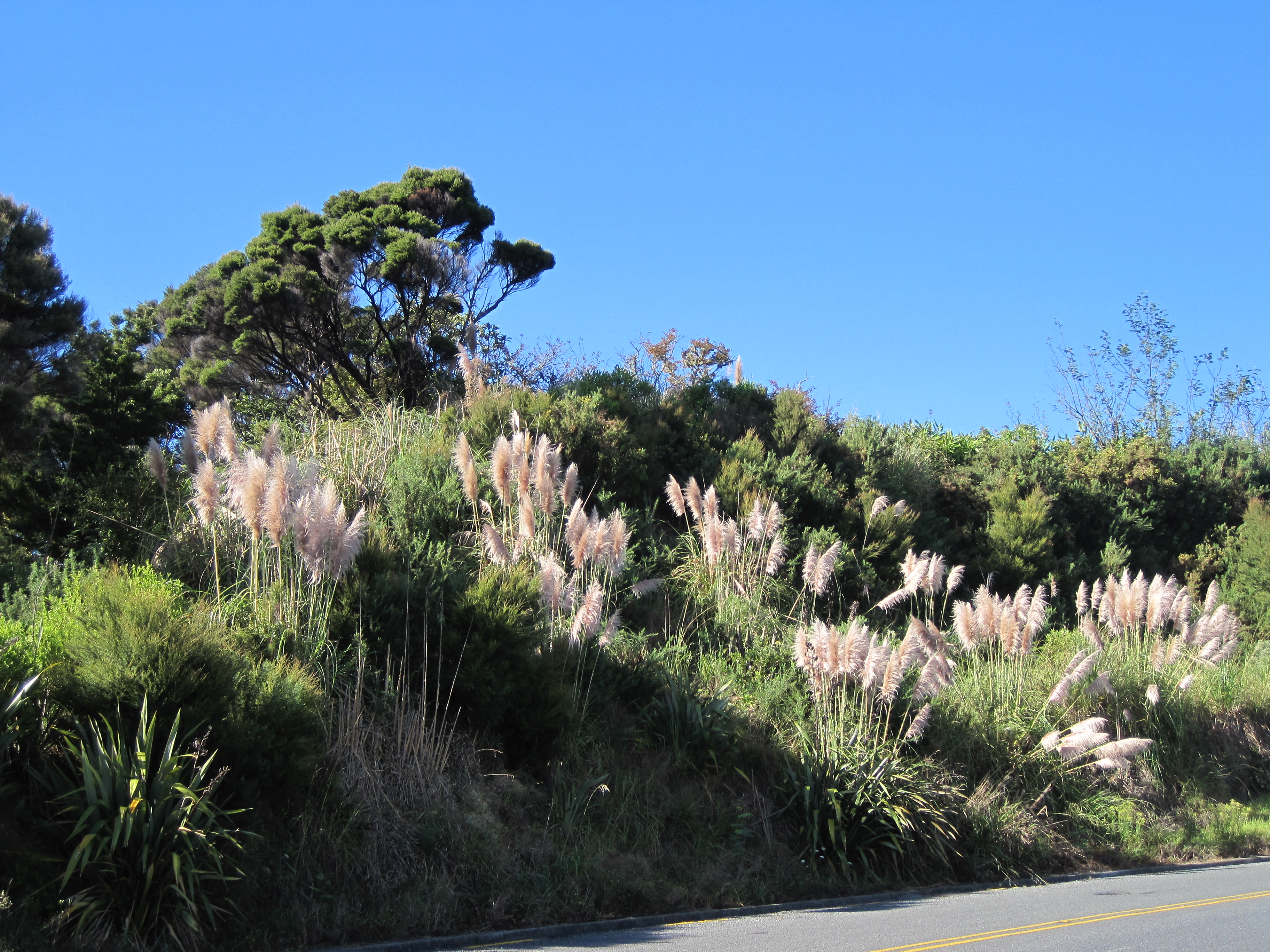Autumn in Japan may not have the caché of a springtime visit in cherry blossom time, but to a gardener it evokes every bit as much awe and delight. And we have our own cherry blossom time right here in Victoria, don’t we?
Visiting family in Tokyo, I’ve had the pleasure of living the Japanese experience; the daily routine of walking everywhere, with the occasional train ride, subway crowds, or the ever-timely local bus. These walks have allowed me to see close up, the small details of green spaces.
Wherever we go we find vignettes of beauty. The Japanese people seem to take any opportunity they can to create loveliness, whether with a small planting, or simply an artful arrangement of stones.
The little corners where sidewalk meets sidewalk speak to passersby “walk by this space, and enjoy”.

Small corner of two sidewalks
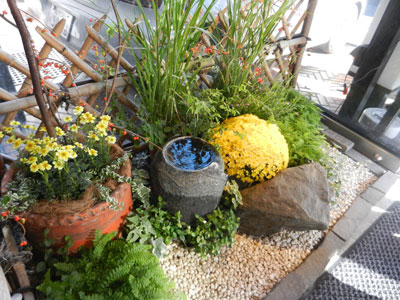
Tiny garden on a busy street corner
We are right across the street from Arisagawa Park, a green oasis of many acres that comprises bike trails, a small lake stocked with fish, the best playgrounds I’ve seen anywhere, and natural forests for exploration. As a gardener, my fascination lies in the flora, seeing details that never cease to please. One of the delights of visiting the park is the array of sweet gestures of concern for all who walk here!

Warnings and gestures
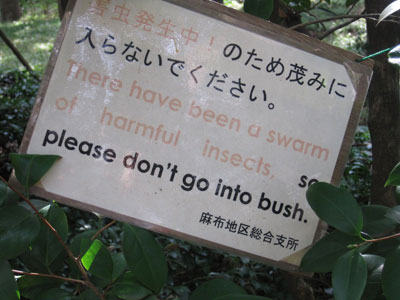
Harmful insects
The first thing to strike me was the respect for the aged here. Not only aged people, but aged trees! The careful support given to gnarly trunks is an art in itself.
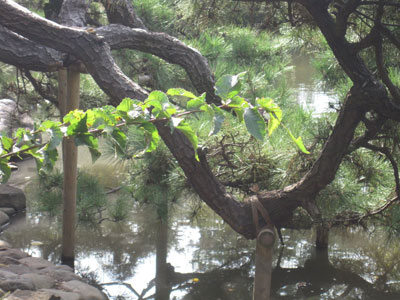
Support for aged tree
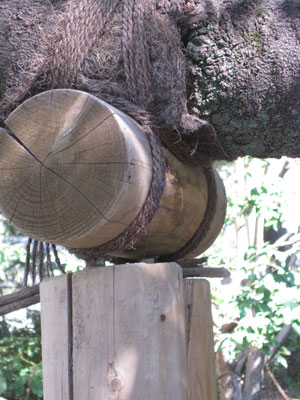
Gentle support for branches
Not just a stake with a length of rubber hose to tie it to the tree, but a padded buffer between trunk and twine, to soften the contact. Respect, appreciation, and love for these elders of the land.
A grass-like plant that I saw everywhere is Liriope, either muscari or spicata, in all its forms: dark green, the golden variegated and the silver variegated.
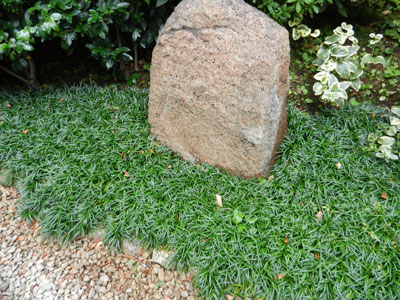
Liriope ‘National Arboretum’

Golden variegated liriope
Liriope is frequently used in Japan not only as a superb ground cover, but as a buffer between shrubs and hard surface; a clipped hedge, then the liriope, then the sidewalk, the liriope being the softening touch between. Needing moisture and part shade, it’s a spreading grass-like perennial that does as well in our climate as it does in Japan. Liriope ‘National Arboretum’ is used everywhere here as part of the small vignettes, a ground cover yet much more. We sell this short, slowly spreading, curved, dark green grass in 4” pots, but I’ve never seen its beauty as I have here, and will be ordering more of it for the nursery in the spring.
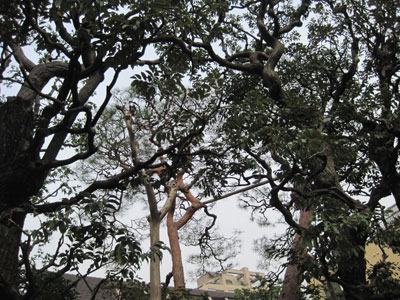
General open nature of mature trees
During the recent inspiring talk by Louise Boutin at the nursery, she mentioned lifting and opening the limbs of trees and shrubs by selective pruning. Well, the Japanese have this down to a fine art; even large trees have been thinned this way, opening up the intriguing branches to light and view.
The use of bamboo is more than an art form here, it is an inspiration. Whether a bamboo grove, a bamboo forest, or a bamboo fence, bamboo is everywhere and it is a marvel.

Bamboo forest
Bamboo still growing is beautiful, but it continues its magic after being harvested and used as supports.
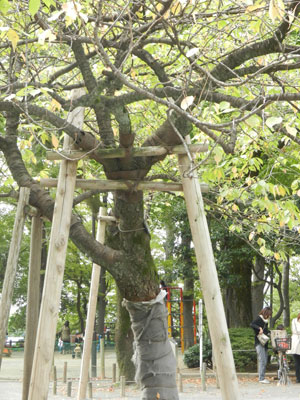
Maybe too much support here?
Whether it is thinned-out Nandina domestica planted and tied against an open bamboo fence, or wispy cedar hedging plants sparsely interwoven with the canes, bamboo provides the bones to support the green, providing a screen in even the narrowest of spaces.
Fences and trellises of bamboo are ubiquitous, and for some reason have captured my heart.
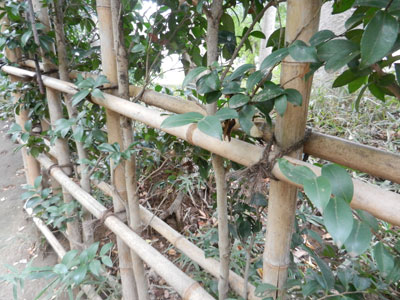
Bamboo fence enclosing
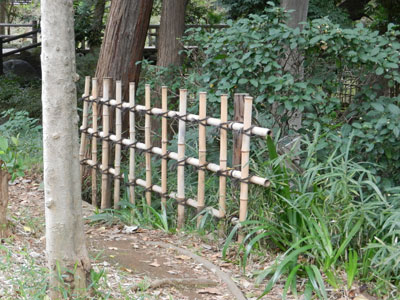
Note how evenly tied
The fascination with diverse styles and methods of tying these fences, trellises and supports led me on a search for traditional lashing, the heavy rough twine that is used for holding the bamboo canes together. This also led me to a book on the subject, and an obsession has taken root. Walking for miles, wrong turns, (even Google maps can be wrong!) finally we found the sought-after Japanese garden center. Traditional lashing was only part of my search; the garden center experience beckoned this gardener with promises of Japanese seeds, tools, and curiosity sated.
Keeping in mind the fact that most Tokyoites don’t have cars, nor yards, nor much space of their own, the garden center was not surprising in its tiny efficiency. It was just a part of a large hardware store, on the second floor even, and very different from Russell Nursery!
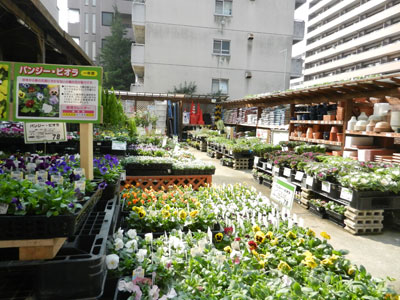
Garden center in Tokyo
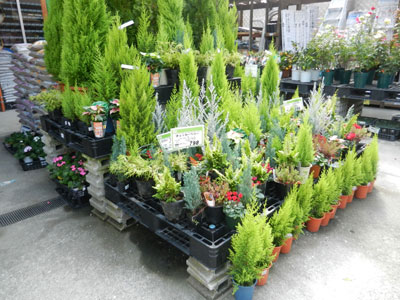
Conifer section, note roses in background
I’m sure all of you have seen the traditional serene Japanese garden, so I’ll close with just a glimpse of the view outside my window in Tokyo, but I hope the small details described will give you the confidence to just try a few simple touches to bring the peace and beauty of the Japanese style to your own place of green.
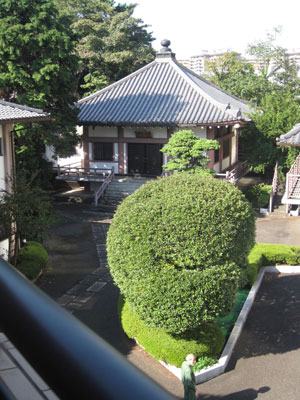
Temple outside my window
